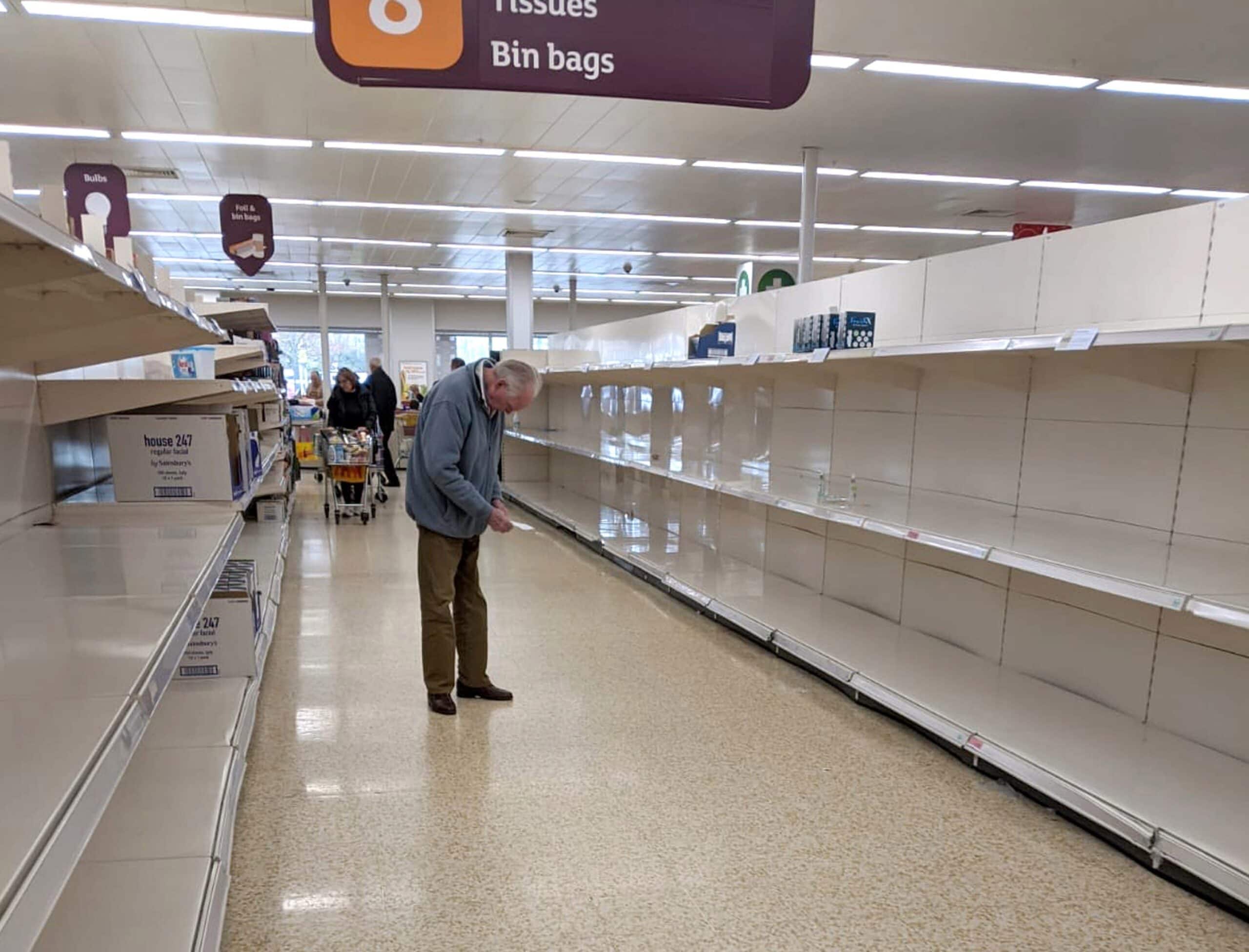Fact and fiction, caution and fear. In times of uncertainty, the lines continue to blur each and every day; in the context of this novel coronavirus, they blur with each and every new case.
As a student rep, since the beginning of this outbreak, my inbox has been flooded with concerns and worries from students – even those of their families. As we were all awaiting Macron’s first presidential address last Thursday, my inbox was—and continues to be—a microcosm of the countless worries circulating the media and our community. What about school? How do I protect myself? Does it even make sense to try? So, I’ll try to get home? – the list went on and on. All of these, valid and real concerns—many of which I shared myself.
Since then, the past few days have been an absolute blur: packing up and moving flats, scrambling to get one of the last flights home, and now, spending my days in self-isolation. Around the world, borders have closed, stocks plummeted, and confinement has been imposed—suffice to say, we are in scary and unprecedented times. Each hour brings us a new update and I know I’m struggling to keep up, or just to keep sane.
In spite of all this, my greatest fear still lies, not with COVID-19 as a virus in and of itself, but with our handling, or lack thereof, of this situation. I can assure you that it is not the shield of my “young and healthy immune system” talking. Some of my close relatives—many of whom belong to one of the at-risk populations—live within the designated cluster zones and have already been impacted by the virus.
Most disappointingly, in reaction to this crisis, I have been saddened to see an emerging culture of hostility and fear vis à vis each other and the institutions that are elected to guide us in complicated times such as the chaos we face today. To combat this, I believe that we must re-distinguish and reinforce the difference between justified concern and subsequent caution from unadulterated fear.
To be clear, I’m not talking about the natural fear evoked by these crises, but rather its dangerous manifestations. This expression of fear is born from the worst of our worries and nurtured by the rhetoric inundating every news cycle. What is the most troubling is how this phenomenon of fear outsources blame, exacerbates pre-existing tensions, and causes us to overrule all notions of rationality and civility. We shall hereby call this by its name: hysteria. If we allow them, hysteria and panic—in their most advanced and unleashed forms—will be our true peril.
This isn’t meant to be a cliché or a sanctimonious lecture about how we “should” be conducting ourselves—the unknowns of these situations are indeed scary, and there is no singular way in which we should be acting. Each government and each situation will be handled differently. Like everyone else, I have no idea what the “right thing to do” is. As much as I wish I did, I don’t know how this situation will play out – and that terrifies me.
In all honesty, a part of me wrote this to convince myself that it’ll all be okay. But, more importantly, I wrote this to empower ourselves to reclaim even a little bit of control and to remind everyone to think critically about how we conduct ourselves in these complicated times. Hopefully, to reground us all – even a little.
So, how do we do this? First, by educating ourselves.
Fact from fiction: what is COVID-19 and what does this mean?
For me, educating myself to the best of my abilities has been instrumental in quelling my personal concerns and worries. If you’ve already kept up to date on COVID-19, then please feel free to skip to the second part of this (although a little refresher never hurts!).
Before I continue, I want to preface this by saying I am neither a healthcare professional, nor a specialist of any sorts. To be frank, I am not even the most educated on this subject. Like many of us, I have merely done my best to learn everything I can, in the hopes of best educating myself on this disease and its consequences.
With help from the lovely Eirene Tomlinson (who wrote a fantastic information post about COVID-19), here’s a short list of what we know:
What exactly is COVID-19?
“Coronaviruses (CoV) are a large family of viruses that cause illness ranging from the common cold to more severe diseases such as MERS-CoV and SARS-CoV. This new, novel coronavirus (nCoV) is a new strain that has not been previously identified in humans.” (WHO).
COVID-19 is simply the label for this new strain; the 19 indicates the beginning of the outbreak in December 2019.
How dangerous is it?
It must be made clear that COVID-19 is “not a death sentence” – especially for young people. As of March 5, COVID-19 has a death rate of 3.4%, incredibly low in comparison to Ebola’s whopping 50% (How bad is the Coronavirus? Let’s run the numbers). Currently, as of March 21, there are over 282 700 cases worldwide, leading this outbreak to officially be “declared a pandemic.”
Those most at risk are the elderly, those with pre-existing health conditions (including heart disease, diabetes, and lung disease), and especially those who qualify as both (CDC). Fortunately, here at Sciences Po, us students are relatively safe.
What are the symptoms?
“Common signs of infection include respiratory symptoms, fever, cough, shortness of breath and breathing difficulties. In more severe cases, infection can cause pneumonia, severe acute respiratory syndrome, kidney failure and even death,” (WHO).
Some, especially children, may display only mild, or even may not display symptoms at all – despite testing positive for the virus – and still infect others. This makes it difficult to contain, but it does not mean that we should not be taking preventive measures, such as the ones listed below.
How can I prevent it?
Based on recommendations by WHO and the CDC, here are some precautionary measures recommended for university students:
- Maintain good personal hygiene. Additionally, try to avoid touching your face or eyes.
- Wash your hands frequently and use hand sanitizer. Wiping surfaces down with disinfectant wipes (such as Lysol or equivalent) is also recommended.
- Make sure to be well rested. For teenagers and young adults, the recommended amount of sleep is 7 to 9 hours per night.
- Be in shape. COVID-19 is especially dangerous for those with a weak respiratory system. Make sure your cardio-respiratory system is in good shape so if you are infected you will have an easier time fighting the virus.
- Avoid activities with a lot of people and keep your distance. Avoid close contact with those who are potentially exposed. Many don’t show symptoms of the virus for two weeks. Some can also be carriers and show no symptoms while still infecting others.
Caution from fear: a humble plea for resiliency from hysteria – patience, not panic
Some final thoughts: first, on who to blame. One of the most difficult things in this specific outbreak is the lack of blame we, as individuals, are able to place. Generally speaking, whenever a problem arises, our tendency is to look outwards: who is to blame? Who is accountable? Most importantly, who is responsible for solving the problem? In this case, we know the origins of this disease, and how the outbreak started—but as for its rapid spread, in a way, we are all to blame.
We have all given la bise, shared drinks, and travelled around – in some instances, even when we were supposed to be under observation. By way of just living in our integrated and connected world, we all, to some extent, shoulder responsibility for the spread of COVID-19. A harsh reality, indeed, but one that is necessary to accept in order to best move forward.
Since it is our shared responsibility that aided COVID-19’s rapid widespread, it is also our shared responsibility to deal with this situation as civic-mindedly as possible.
So please: stay at home! Experts in the scientific community have been urging us to practise social distancing – which, as of now, is the only proven measure of flattening the curve. As President Macron best said, “nous sommes en guerre”; as such, we must all do our part to fight and rally against this virus.
Second, a note on the treatment of others in this complicated time.
Fear is a powerful tool. Historically and currently, justified fear and anxiety has exploited and intensified some of the worst divisions in our society. When we surrender ourselves to unchecked fear, to hysteria and to panic, we relinquish our rationality, and surrender ourselves to acting in ways we never thought possible.
Already, we’ve heard horror stories of Asians taking the brunt of this misdirected blame – from our own Sciences Po community (as recounts Zeyu Liu in his The Devil Behind the Virus), to the global increase of xenophobia (As Coronavirus Spreads, So Does Xenophobia and Anti-Asian Racism), this burden has been unjustly coerced onto our shoulders through discrimination, threats, and even violence (East Asian Student assaulted in ‘racist’ coronavirus attack). To me, this response was shocking, but not entirely unexpected. This situation just proves that uncertain circumstances befall unforseen responses – as much as we’d like to pretend otherwise, we are no exception.
Again, let me be clear: in no way am I trying to diminish or denigrate the genuine and real fear that this crisis has caused. This is not meant to be some holier-than-thou spiel on what we should be doing. As no one is immune to COVID-19, no one is immune from giving into their worst selves. We are allowed to be scared; in fact, we shouldn’t try and convince ourselves otherwise. What we cannot allow is this fear, hysteria, and panic, to overtake and overcome us. We can denounce hysteria without belittling our personal anxieties – all while doing our part to help flatten the curve.
Pandemics may “shape history,” but we shape our response. If you take anything away from this long-winded rant, take this: in times of uncertainty, our resilience to fearmongering, to division, and to hysteria and panic is being tested – so, at least, here, within our own communities, let’s try and prevail.
The information in this piece is up to date as of March 20, 2020 – as this situation is evolving, the information will as well.
Here are a few good sources for keeping up to date:
- The World Health Organization (WHO) daily report: WHO (English)/ WHO (French)
- The Centre for Disease Control (CDC)
- Podcast (my personal favourite): CNN: Coronavirus fact vs fiction
Other posts that may interest you:
- The Chair: Sitting With Everyday Violence
- The Trouble with ‘Ecocide’
- Carbon dioxide removal – hit or miss?
- Local Victories for Turkish Opposition — A Sign of Hope?
- Are France and Japan a Mismatch Made in Heaven?
Discover more from The Sundial Press
Subscribe to get the latest posts sent to your email.





